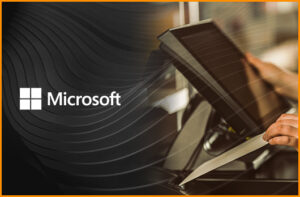Earlier this year, Microsoft announced design changes to its certificate of authenticity (COA), transitioning from the Conifer COA design to the updated Gemstone COA design. Explore what that entails, as well as what this means for your business, in this article.
What aspects of the COA remain the same?
While the Gemstone series is an upgrade to COAs, there are several things that will remain unchanged from the previous version. This includes:
- Sticker dimensions for PC COA and Piggyback PC COA
- Base label symbols (including squares, circles, and stars) that act as market differentiators
- Material (polymer substrate and adhesive)
- Print position of data fields
What are the new COA names under Gemstone?
Many of the available Gemstone COA models come directly from older Conifer designs. Below, we outline the model, its name under the Conifer design, and the new name under the Gemstone design.
- PC COA: Originally Pine, this has now become Ruby.
- Piggyback PC COA: Originally Spruce, this has now become Emerald.
- Emerald: Originally the Spruce model, this is for the Piggyback PC COA.
- OEM Distributor & Reseller (ODR) COA: Originally Juniper, this has also become Emerald.
What changes have been made to the anti-piracy features?
The biggest change from Conifer to Gemstone comes in new anti-piracy methods. Most noticeable is the shift from movement holography, which included 2D and 3D imagery, to enhanced holographic features in the logo, line structures, and metalized tiles.
Furthermore, the new COA design incorporates a full label voiding (FLV) feature. If a label is removed, the adhesive is separated from the transparent primary layer, making it easy to detect if the COA has been tampered with, or even previously removed.
Along with the upgraded anti-piracy measures, the Gemstone COA designs will still utilize safety aspects from the Conifer line, including time and date stamps, as well as serialized concealment labels, to help provide up to date security measures for all customers.
What do the new Gemstone COA labels mean for OEMs?
The only major shift to consider is with ODR COA labels, which are larger than the corresponding Conifer counterpart. In most cases, however, the new Gemstone COA labels won’t impact OEMs.
What if I have other COA and general Microsoft licensing questions?
If you have more questions, Bsquare is here to help. For more detailed information into which products use which COA, explore our Product pages. Feeling a little lost navigating the licensing process? Check out our guide on common Microsoft licensing acronyms. Finally, if you’re looking for more hands-on assistance at any point in your licensing process, contact one of our experts today.



